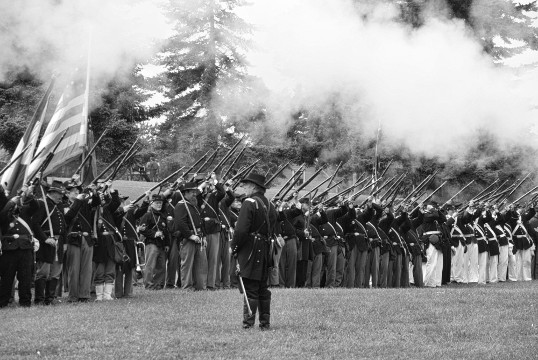
State lotteries appeal to the poor and are effectively a tax on the poor. States are fully aware of this, yet they keep steering more money into lottery advertising budgets.
Furthermore, state lotteries are promoted as a chance to “fund the education” to both make people feel better about playing the lottery and to make them feel guilty if they don’t. In general, however, state lotteries have zero net-effect on state education budgets.
Here’s the whole story.
A Tax on the Poor

Low-income households spend a higher percentage of their income on lotteries than their wealthier peers do. Annually, US households spend $162 on lotteries on average; for low-income households, the figure is $289 and for those who make less than $10,000 it’s $597, or around 6% of their yearly income (Why the Poor Play the Lottery).
21% of adult americans believe participating in a lottery would be their most practical way to accumulate $200,000 in net wealth. Among low-income participants, 38% believed the same. (Six Figure Savings? Most Say ‘Unlikely’)
And states know that. In fact, it’s been obvious ever since the 19th century (and perhaps even before that), when the US Supreme Court said the following (Stone v. Mississippi, 101 U.S. 814 (1879)):
“Experience has shown that the common forms of gambling are comparatively innocuous when placed in contrast with the wide-spread pestilence of lotteries. The former are confined to a few persons and places, but the latter infests the whole community; it enters every dwelling; it reaches every class; it preys upon the hard earnings of the poor; and it plunders the ignorant and simple.”
Furthermore, those who win the lottery are often back to where they started in a few years’ time. There are plenty of examples, like the garbage man who won $15.4 million and is now back collecting garbage, or the historic ’81 lottery winner now living in a mobile home, or the single mother from Virginia who won $4+ million but is now badly in debt. In fact, the National Endowment for Financial Education estimates that 70% of lottery winners end-up broke.
That’s if they’re not killed or having hitmen hired on them by relatives. Only 55% of lottery winners are happier after winning. And, amazingly, winners often fail to claim their winnings (in 2013, more than $2 billion was left unclaimed).
How It All Began

Lotteries have played an important role in raising funds ever since the early colonies. They were used to fund around 200 churches, 300 schools (such as Harvard, Yale, Columbia and Princeton) and railroads among other ventures.
Back then, lotteries were marketed as almost a responsibility so that people would partipicate “for a good cause”, such as building infrastructure. George Washington organized a lottery to raise money for a road and Benjamin Franklin used them to finance cannons.
Nowadays, “education” and “contributing to our children’s future” is a commonly-used angle.
Lotteries have always been popular, but they’ve also generated lots of scandals throughout the years. In fact, lotteries have been prohibited in America twice (mainly) due to scandals. The most recent one was the Louisiana Lottery scandal in 1905, although it was preceded by decades of other scandals.
But lotteries have always come back mainly because states have been in desperate need of the money. More than five decades after the Louisiana Lottery was shut down, in 1964, New Hampsire re-discovered the state lottery, followed by New York (1967) and New Jersey (1970).
Today, state lotteries are available in 43 states plus Washington DC. In 2014, lottery sales were higher than ever at $70,153,520,000. In some states, lotteries bring in more revenue than corporate income taxes (in Rhode Island, three times as much).
States are constantly looking for ways to have people commit more money to lotteries by organizing them more often, making them more convenient and offering higher prizes. Aided by subscriptions (“Never Miss Another Draw!”) to payroll withholding plans, and from instant lottery tickets to daily, bi-weekly and weekly drawings, plus websites and mobile applications, the growth is likely to continue.
Selling Hope

Ambrose Bierce called lottery “a tax on people who are bad at math.”
It’s hard to argue otherwise, considering how investing $1 and getting $0.55 in return – especially when you’re investing 6% of your $10k a year income – makes little sense financially.
However, lotteries are popular not because of the level of its participants’ algebra, but because selling dreams and hope works when a person is struggling for money.
Oh, and it helps to have a federal exemption from truth-in advertising.
”Anything’s Possible.”
That’s Illinois lottery’s tagline. Some other good ones are “Everybody Wins” (New York), “It Does Good Things” (Oregon), “Give Your Dreams a Chance” (New Jersey), and “Somebody’s Gotta Win, Might as Well Be You” (Kentucky).
Or perhaps “Just Imagine” (Florida) will do?
Oregon has built its lottery around “doing good,” however, as you’ll find out if you keep reading, it can be argued that state lotteries do very little good and potentially lots of bad. Once you’ve read this article through, you’ll understand why this ad is shameful:
Here’s a Christmas ad campaign (“What’s In Santa’s Beard?”) by the Oregon Lottery. Notice how they say “Lottery is a game of chance, it should be played for entertainment only, not for investment-purposes” – all of that within the last two seconds of the ad (it took me a few replays to even understand what was said and I’m still not 100% sure).
The North Carolina Education Lottery is really trying to make the point that participating in the lottery means you’re contributing to a good cause, and perhaps to even guilt people into playing. As you’ll find out lower on this page, however, it’s unclear whether lottery proceeds add anything to state education budgets. The video does mention “Play Responsibly” briefly and with a small text.
Here’s New York’s education lottery ad, perhaps with more emphasis on helping children (and remember, “everybody wins,” right?):
An important part of selling dreams is showcasing the winners through ads and news stories (so basically ads), often with a (not-so-subtle) touch of sensationalism. Lottery directors are aware of the availability bias (winners get all the publicity and attention, so those are the relevant instances that come your mind when you consider your chances of winning the lottery) and use it to their advantage.
For example, this $10 million lottery winner ”bought a lottery ticket to break a $100 bill.” However, if you look at the story more closely, he actually bought two tickets each worth $20 which hardly sounds like his purpose was to break a $100 bill.
But they had to make it an interesting story to catch people’s attention.
A part of lottery’s popularity can also be attributed to offering a chance to win life-changing amounts of money – no matter how distant that chance is – in return for an “insignificant” investment. Many consider investing a few dollars every week into lottery something that’s never going to affect their daily life, which then justifies the investment.
Richard A. Proctor made this observation already in 1887 in his book Chance and Luck (which, by the way, is available at Project Gutenberg):
“Long experience has shown that men possessed with the gambling spirit (ninety out of a hundred if the truth were known) are not to be deterred from venturing small sums in order to win large fortunes, even by the clearest evidence that the price they have to pay is an unfair one.”
Plenty of studies have come to similar conclusions. In The Appeal of Lotteries and Their Use in Incentive Design, Emily Haisley suggests that low-income spending on lotteries would decrease if you had to pay more at a time:
“However, our results do point to a potential policy application that could selectively reduce ticket purchases by low income players and promote responsible gambling. Lottery tickets could be sold in packages of multiple tickets, e.g. packs of 5 undiversified $1 tickets. In line with our research findings, this should decrease the sale of lottery tickets overall by reducing people’s propensity to discount the low cost of a ticket as a ‘peanut’ without realizing how costs add up over time.”
The small investment is enticing, but people are also attracted to the low probability of winning due to being unable to rationalize how low it really is. In his best-selling book Thinking, Fast and Slow, Daniel Kahneman conludes that people have the tendency to overweight low probability chances and underweight high probability chances:
“For example, the decision weight that corresponds to a 2% chance is 8.1. If people conformed to the axioms of rational choice, the decision weight would be 2 — so the rare event is overweighted by a factor of 4. The certainty effect at the other end of the probability scale is even more striking. A 2% risk of not winning the prize reduces the utility of the gamble by 13%, from 100 to 87.1.”
“The conclusion is straightforward: the decision weights that people assign to outcomes are not identical to the probabilities of these outcomes, contrary to the expectation principle. Improbable outcomes are overweighted — this is the possibility effect. Outcomes that are almost certain are underweighted relative to actual certainty. The expectation principle, by which values are weighted by their probability, is poor psychology.”
Finally, Gambling on the Lottery: Sociodemographic Correlates Across the Lifespan concludes that low-income households may see lotteries as a “social equalizer.”
“In an experiment, Haisley et al. (2008) tested the hypothesis that people who feel poor in a relative sense due to implicit comparisons with others are more likely to purchase lottery tickets; i.e., low-income individuals are motivated to play the lottery to correct for low-income status. The authors found support for the hypothesis in that low-income participants were more likely to purchase lottery tickets when they were primed to perceive that their own income was low relative to a reference point. The authors concluded that for low-income participants, lotteries may be considered a “social equalizer” whereby everyone has an equal chance to win.”
Education

States make a big deal about funding good causes with lottery revenue – in many cases, the good cause is education. While this is technically true, they’re often being vague about just how much the lottery helps the state’s education (or fail to mention it altogether).
And for a good reason.
Firstly, the majority of the revenue never goes to good causes. Instead, most of it is dedicated to prizes (understandably so) and, often, reserved for even bigger prizes plus administration expenses (such as salaries and advertising). Then, the state takes its cut.
What’s left is dedicated to good causes like education, although relative to a state’s education budget, it’s usually a drop in the ocean.
For example, in California it’s 1.4% of the state’s education budget, and in Massachusetts, 4.4%. Some states have higher percentages, though, such as New York with 14%.
Unfortunately, regardless of the percentage, the money that was already intended for a good cause is usually re-distributed elsewhere. State lotteries claim to operate “for a good cause” as a marketing angle to fool the general public. The net-effect for a good cause is often zero.
Here are two quotes from a study by the Illinois Association of School Boards (IASB) called Where Does the Lottery Money Go?:
“Although lottery profits are deposited in the Common School Fund, that is merely an accounting maneuver that actually reduces the amount of money that schools require from other state sources. Lottery profits themselves provide no additional funds for the schools.”
“The state lottery, unfortunately, will continue to be used as a smokescreen to make it appear that the state is adequately funding schools when, in fact, that is not the case.”
Here’s an excerpt from Hope and Hard Luck:
“Since then, the lottery has turned over more than $1 billion to state educational programs to fund
early education programs, scholarships for needy students and construction of new schools. But
it’s done so while chipping away at the percentage it gives to education each year. State law
initially called for 35 percent of the lottery’s revenue to go to education, but a loophole has
allowed that percentage to drop to 29 percent with lottery officials pumping the extra money into
prizes in order to increase revenue.”“Critics have worried that some of the money has gone to replace funding that was already there,
and hasn’t gone to fund additional programs that otherwise wouldn’t be funded.”
The conclusion of a study called Education’s gambling problem: The impact of earmarking lottery revenues for education on charitable giving and government spending is interesting and implies that education lotteries not only fail to increase state education budgets but, in fact, may cause a decrease in charitable contributions:
“The introduction of an education lottery fails to significantly increase state education expenditures…”
“… charitable contributions to education significantly decrease after the introduction of an education lottery; contributions received by education-related nonprofit firms drop by 8% with a lottery.”
In many cases, it’s difficult to tell what states actually spend their lottery revenues on. Without any inside information, following the money is all but impossible.
Here’s an excerpt from a New York Times article in 2007:
In Nebraska, from 2002 through the last fiscal year, legislators diverted lottery dollars from the state’s K-12 education and other programs into the general fund to make up for a shortfall.
“Diverting lottery funds into the general fund was one of many ways to make up for the lost revenues,” said Bruce Snyder, a supervisor in the accounting office at the Nebraska Department of Administrative Services.
Lottery officials say they are unfairly blamed for legislators’ decisions. “Our job is to raise money for the things the legislators want,” said Clint Harris, director of the Minnesota lottery. “We don’t have any control over what happens to the money.”
But Brett McFadden, a budget analyst with the Association of California School Administrators, said: “It makes it harder for us to convince people that they still need to support education.” He added, “They think the lottery is taking care of education. We have to tell them we’re only getting a few sprinkles; we’re not even getting the icing on the cake.”
John Oliver had a segment on this very subject on Last Week Tonight:
Conclusion
Lottery, as a concept, is not evil, but state lotteries are.
States know that, relatively, low-income households spend significantly more on the lottery than the average US household, and that the lottery is effectively a tax on the poor, yet their advertising campaigns keep shamelessly targeting the poor.
Furthermore, many claim states to fund education within the states with lottery revenues, yet lottery revenues makes up only a small percentage of most states’ education budgets. Additionally – and more importantly – state education budgets typically gain nothing from lottery revenues since states simply move that part of the budget elsewhere.
Finally, state lotteries are monopolies and are able to keep their payback percentages low (since there’s no competition within the state), and therefore are able to pay high salaries to employees (all the while the poor commit high percentages of their income to the lottery).
